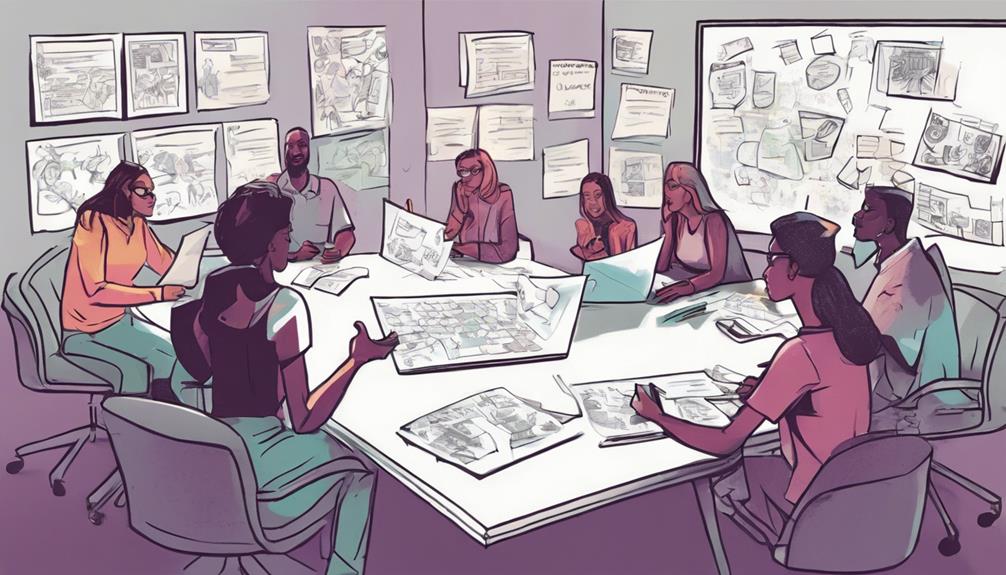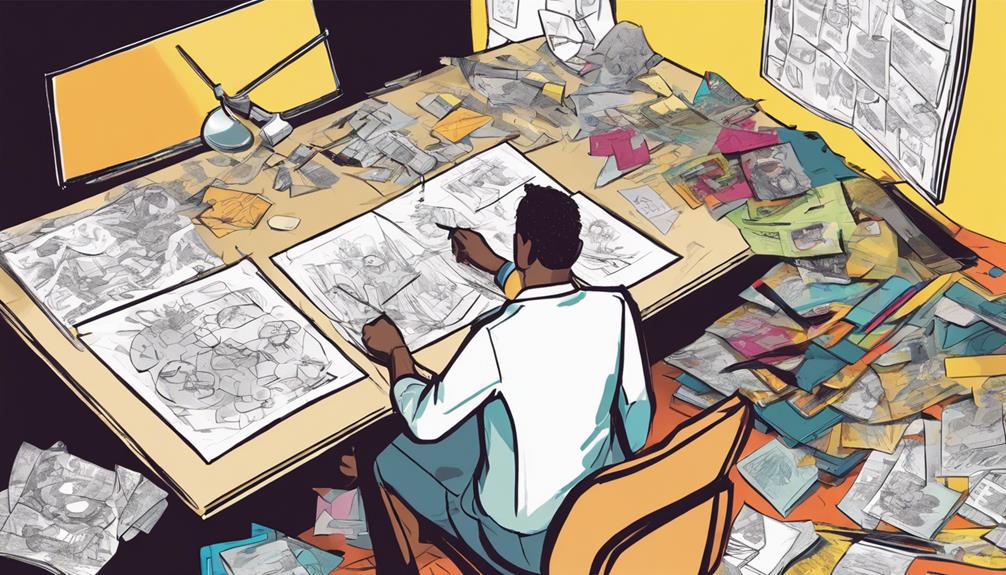Uncover the heart of Design Thinking – a problem-solving method focused on users, sparking innovation, and following a structured path promoting creativity and teamwork.
Key Takeaways
- Dynamic problem-solving method emphasizing user needs.
- Encourages innovation through structured processes.
- Prioritizes collaboration and creativity.
- Fosters a user-centric culture for improved outcomes.
- Involves iterative stages like Empathize, Define, Ideate, Prototype, and Test.
What Is Design Thinking?
Design Thinking is a dynamic problem-solving approach centered on understanding user needs and fostering innovation. This approach involves a structured process that encourages creativity and collaboration to tackle complex problems effectively.
By prioritizing empathy and focusing on user needs, Design Thinking aims to create innovative solutions that truly resonate with the end-users. One of the key aspects of this methodology is the emphasis on iterative development through prototyping and testing. This means that ideas aren't set in stone but are continuously refined based on feedback and experimentation.
Through the Design Thinking process, individuals are encouraged to think outside the box, challenge assumptions, and explore multiple possibilities before arriving at a final solution. By incorporating elements of empathy, creativity, and user-centricity, Design Thinking provides a framework for organizations to drive innovation and deliver products and services that truly meet the needs of their target audience.
Key Principles of Design Thinking
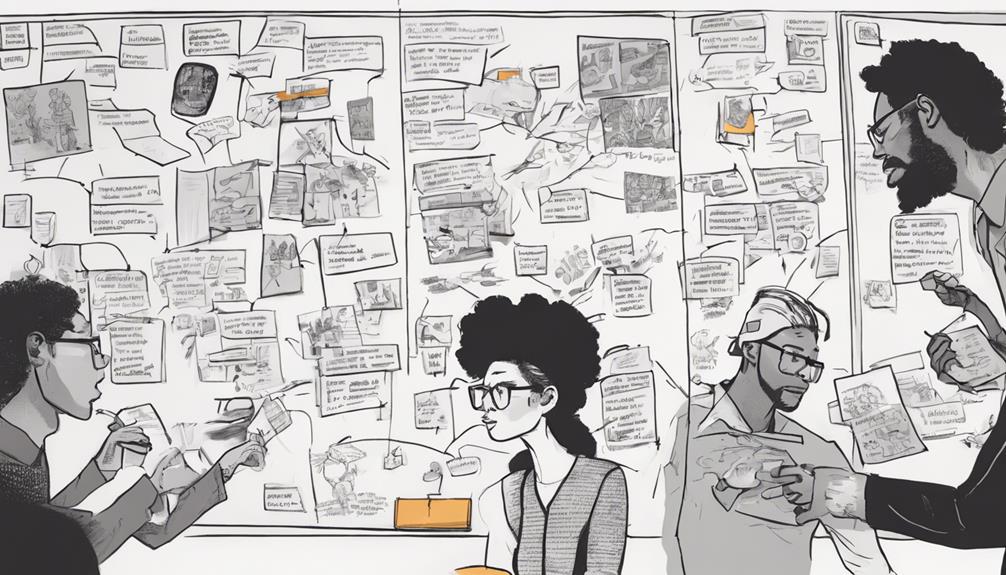
Guided by fundamental principles, the essence of Design Thinking lies in shaping innovative solutions by prioritizing user perspectives and embracing ambiguity.
The principles of Design Thinking – the human rule, ambiguity rule, redesign rule, and tangibility rule – serve as the backbone for this approach.
The human rule underscores the importance of understanding user needs and viewpoints throughout the entire design process.
Embracing the ambiguity rule, designers are encouraged to challenge assumptions and navigate uncertainty, fostering creativity in problem-solving.
The redesign rule advocates for continuous iteration and improvement to enhance solutions based on feedback and insights gained.
Finally, the tangibility rule emphasizes the creation of tangible prototypes for testing and validation, ensuring that ideas are brought to life in a practical manner.
Benefits of Design Thinking
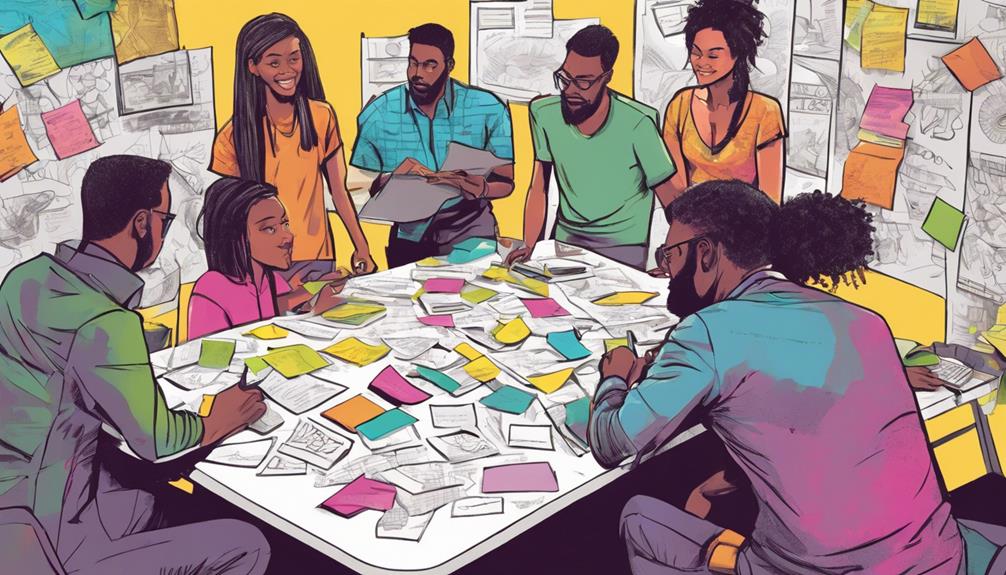
Enhancing innovation and fostering collaboration, Design Thinking offers a multitude of benefits that positively impact organizations and their outcomes. By focusing on user needs and providing creative solutions, Design Thinking enhances innovation and fosters a user-centric culture within teams. This approach not only improves decision-making but also enhances user experiences, ultimately leading to better business results.
| Benefits | Description | Emotion |
|---|---|---|
| Innovation | Design Thinking encourages creativity and exploration of new solutions, leading to enhanced innovation. | Excitement |
| Collaboration | The methodology fosters collaboration and multidisciplinary teamwork, creating a positive and inclusive culture. | Unity |
| User-Centric Solutions | By prioritizing user needs, Design Thinking ensures that solutions are tailored to enhance user experiences. | Satisfaction |
Design Thinking Process Explained
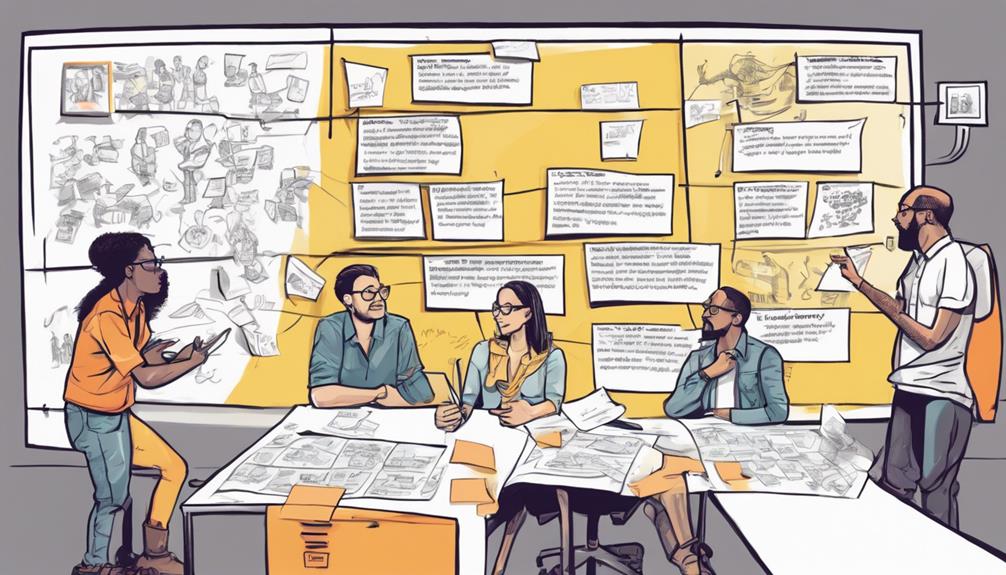
You'll learn about the key stages of the Design Thinking process, including Empathize, Define, Ideate, Prototype, and Test, each serving a specific role in problem-solving.
Design Thinking follows an iterative approach, allowing for continuous refinement and enhancement of solutions based on feedback received.
Understanding this iterative problem-solving method is essential for successfully implementing Design Thinking in your projects.
Process Stages Overview
Understanding the Design Thinking process involves exploring five distinct stages that guide the development of innovative solutions.
The first stage, Empathize, is all about understanding the user needs by gaining insights into their experiences.
Following Empathize is Define, where the core problem is identified for solution.
Ideate comes next, encouraging the generation of diverse and creative solutions to address the defined problem.
After Ideate, the Prototype stage allows for tangible experimentation and feedback on the proposed solutions.
Finally, the Test stage involves validating the solutions with users to refine and improve the final design.
Each of these stages in the Design Thinking process plays an essential role in ensuring that the developed solutions are truly innovative and effectively address the user needs.
Iterative Problem-Solving Approach
Design thinking is an iterative problem-solving approach that emphasizes understanding user needs and fostering innovation through a structured process of five distinct stages. This iterative process encourages continuous refinement and improvement of solutions through empathy, creativity, and collaboration.
By iterating through the stages of Empathize, Define, Ideate, Prototype, and Test, Design Thinking allows for the exploration of diverse perspectives and the generation of innovative solutions tailored to user requirements.
Collaboration plays a key role in this approach, enabling teams to leverage their collective creativity and expertise to address complex challenges effectively. Experimentation within Design Thinking empowers individuals to test ideas rapidly and gather user feedback iteratively, leading to the development of solutions that truly meet user needs.
Through this iterative problem-solving approach, Design Thinking cultivates a culture of innovation and solution-oriented thinking, driving the creation of impactful and user-centric products and services.
Implementing Design Thinking Strategies
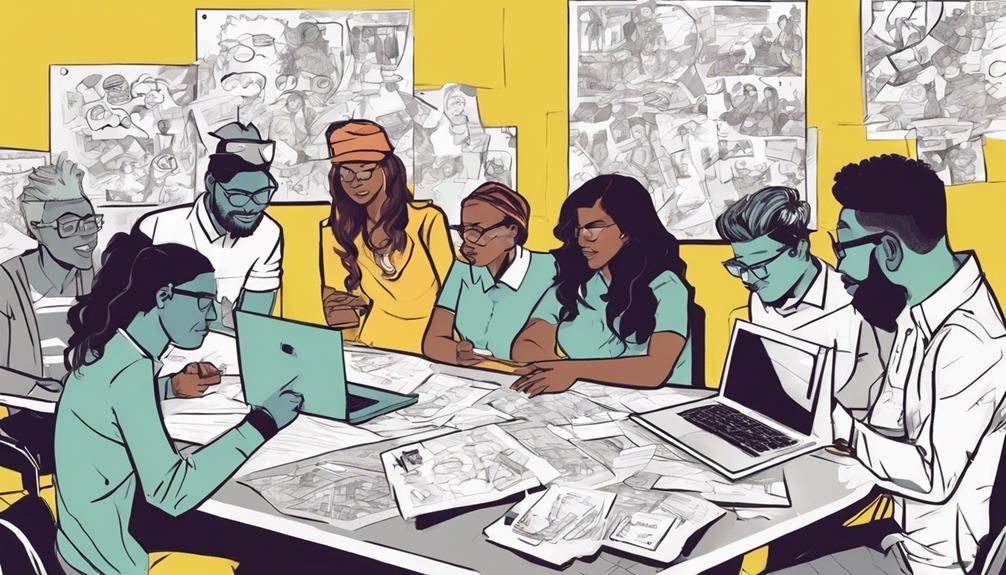
To successfully implement Design Thinking strategies, fostering a user-centric culture within your organization is essential. Here are some key steps to help you effectively integrate Design Thinking:
- Upskill Your Teams: Enhancing problem-solving capabilities through Design Thinking methodologies is necessary for driving innovation.
- Integrate Design Thinking: Embedding Design Thinking into existing processes fosters continuous improvement and encourages a culture of innovation.
- Measure Success: Evaluating the ROI and success of Design Thinking initiatives is critical for understanding their impact and making informed decisions for the future.
- Encourage Collaboration: Promoting teamwork, creativity, and cross-functional collaboration are essential for the successful implementation of Design Thinking strategies.
Applications of Design Thinking
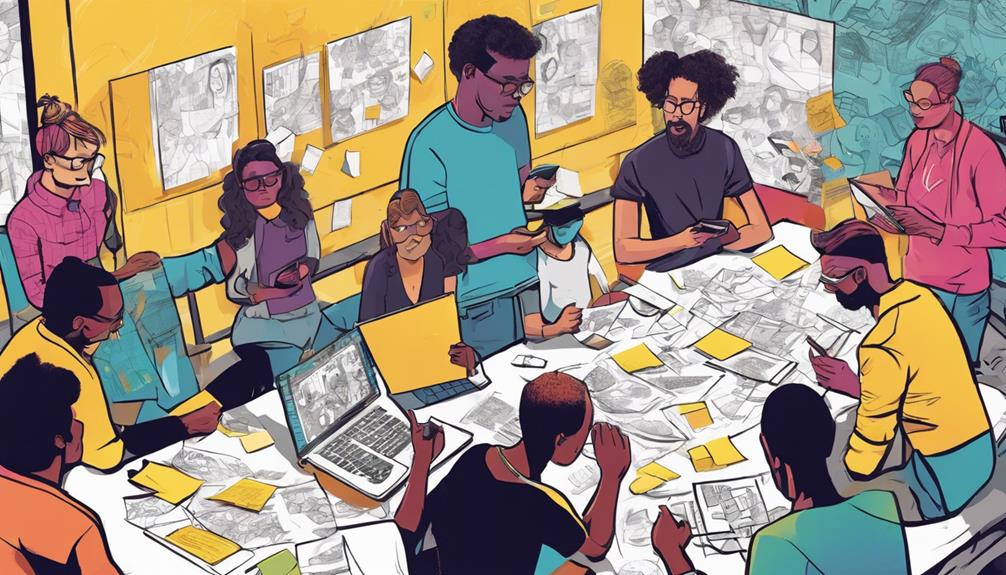
Companies across various industries leverage design thinking to revolutionize their product development processes and enhance user experiences. Design thinking applications extend beyond product development into problem-solving and innovation. This human-centered approach emphasizes creative thinking to tackle complex problems effectively. By utilizing design thinking methodologies, organizations can craft user-centric solutions that resonate with their target audience.
To illustrate the diverse applications of design thinking, consider the following table:
| Applications of Design Thinking | Benefits |
|---|---|
| Product Development | Enhances user experiences |
| Service Design | Improves customer satisfaction |
| Organizational Strategy | Fosters innovation and creativity |
Through hands-on methods and a user-centric mindset, design thinking offers a unique perspective on solving challenges. It challenges conventional problem-solving techniques and inspires out-of-the-box solutions to drive success in various areas of business.
Frequently Asked Questions
What Are the 3 Key Concepts of Design Thinking?
To understand design thinking's 3 key concepts, focus on empathy, ideation, and experimentation. These involve grasping user needs, brainstorming without limits, and testing solutions for continuous enhancement. Embrace empathy, creativity, and innovation in your design process.
How Might We Define Design Thinking?
To define design thinking, you focus on understanding user needs, generating innovative solutions, and testing prototypes. It's a human-centered approach that drives creativity and problem-solving. Embrace empathy, ideation, and testing to foster innovation.
What Are the Two Types of Design Thinking?
Design Thinking has two types: Human-Centered Design and System-Centered Design. Human-Centered Design prioritizes user needs and experiences, while System-Centered Design considers the broader context and interdependencies. Explore these approaches for innovative solutions.
What Are the 5 Modes of Design Thinking?
To understand design thinking fully, remember the 5 modes: Empathize, Define, Ideate, Prototype, and Test. Start by connecting with users, defining the problem, generating ideas, creating prototypes, and testing solutions for success.
Conclusion
To sum up, design thinking is a potent problem-solving approach that emphasizes empathy, creativity, and collaboration.
By integrating user-centered solutions and iterative processes, you can genuinely think outside the box and generate pioneering solutions.
So, don't hesitate to roll up your sleeves and immerse yourself in the realm of design thinking – the possibilities are endless when it comes to unleashing your creativity and addressing intricate challenges.
